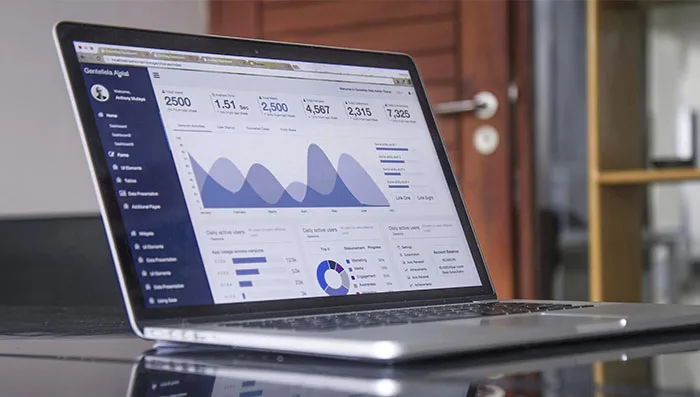Home » Macro Economic Overview » Electronics and appliance stores
Electronics and appliance stores
Total Sector Spending
Overall spending trends across an industry sector
What's the story behind the data?
Facteus transactional data reveals a volatile year for Electronics and Appliance Stores, with strong seasonal peaks in December and April (up 18% and 10% YoY respectively) and pronounced softness in the spring and summer months. This pattern aligns with historical buying cycles around holiday gifting and tax refund spending but contrasts with the sustained pressure in the mid-year months, which lack promotional tailwinds. External data, including the U.S. Census Monthly Retail Trade Report and recent retailer earnings, supports this volatility: Best Buy’s Q1 FY25 results reflected declining foot traffic and cautious consumer tech refresh cycles, while appliance-focused retailers cited persistent weakness in big-ticket discretionary categories.
Demographic shifts are also notable. Higher-income households ($125K+) are tightening spend, showing YoY declines of 5-6%, while middle-income brackets ($75K-$100K) remain flattish. Younger consumers (Millennials and Gen X) are showing modest growth in sector spend, contrasting with steeper declines from Gen Z and Baby Boomers. This may reflect life-stage purchase patterns (home setup, replacement cycles) among middle-aged cohorts.
Meanwhile, our data shows significant brand-level divergence. Best Buy remains dominant but has seen incremental share erosion, while mid-tier regional players like P.C. Richard & Son and Conns have quietly gained ground, both in AOV and market share. Notably, Conns’ AOV surge in July and August 2024 is not mirrored in public earnings disclosures, suggesting possible early promotional experimentation or financing-driven basket growth that has yet to show up in reported revenue.
Implications by Audience
FP&A / Strategy Teams
- Budget scenarios should assume continued Q4 seasonality but weaker baseline sales in Q2–Q3.
- Declines among higher-income shoppers call for a re-examination of pricing strategies or premium product positioning.
- Rising AOV at mid-tier brands may signal success of promotional bundling or financing incentives worth tracking.
Marketing and Brand Teams
- Millennials and Gen X should be primary campaign targets given their relative spend growth.
- Softness among Gen Z highlights the risk of over-indexing on emerging demo trends.
- Brands like Conns and BrandSmart USA may be winning on price perception or credit offerings—marketing teams should analyze positioning shifts.
Investors
- Watch for early signs of regional share shifts from Best Buy to mid-tier players—this may foreshadow margin compression.
- AOV volatility suggests basket engineering (e.g., add-ons, warranties) is a key growth lever.
- External earnings may understate real-time category movement—investors should use card data to anticipate inflection points.
Top Brands by Market Share
Leading brands ranked by market share within sector
Trends + Insights
- Total Sector Spending
After a solid Q4 2024, sector spending cratered in May 2025 (-14% YoY) before rebounding slightly in June. The April surge (+11%) aligns with tax refund season and retailer discounting. This mirrors NRF reporting on April promotional activity, though the May collapse is more severe in our data than reported retail sales figures, suggesting sharper real-time pullback in discretionary spend. - Sector Spending by Income
Lower-income households (<$50K) reduced electronics/appliance spend by over 9% YoY, likely constrained by inflationary pressures and rising cost of living. Higher earners (> $150K) also pulled back sharply (-6%), consistent with “wealthy but worried” consumer behavior noted in Deloitte’s recent outlook. Only the $75K-$100K tier showed stability, potentially reflecting dual-income households still participating in promotional buying. - Sector Spending by Generation
Millennials and Gen X posted +2% YoY growth while Gen Z saw a -4.5% decline. The Gen Z drop contrasts with some narratives about their tech-savviness driving category demand. Our data suggests their discretionary capacity may not yet match intent, reinforcing the need to temper audience assumptions in electronics targeting. - Top Brands by Market Share
Best Buy retains dominant share (~85%) but lost 3pts between December and June. P.C. Richard & Son and Conns show slow but steady gains, which aligns with Conns’ public focus on credit expansion and localized offers. Notably, these shifts are not yet fully priced into investor models that rely on delayed 10-Qs. - Top Brands by AOV
P.C. Richard & Son continues to command the highest AOV (> $600), with seasonal surges in November–December and again in March–April. Conns showed a surprise AOV spike in July–August 2024, suggesting a shift in customer financing mix or higher-value promotional bundles. This data point is not yet corroborated by earnings reports, positioning Facteus data as an early signal.
Top Brands by AOV
Leading brands ranked by average order value within sector
This macro sector analysis provides detailed insights into economic trends and consumer behavior patterns. The visualizations below are derived from real-world transaction data and economic indicators.
Unlock additional content
Get immediate access to the full data set.
Sector Spending by Income Bracket
Industry sector spending patterns by household income level
Sector Spending by Generation
Industry sector spending patterns by generational cohort
Ready to Get Started?
Discover how to access personalized data and insights in a one-on-one session with our team!




